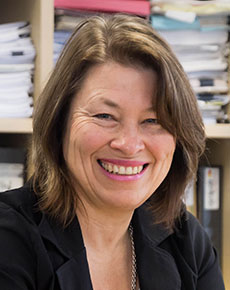$160 million for languages education in schools? Let’s make sure we get it right.

National’s election promise of $160 million dollars for language learning in schools has the potential to completely transform language learning in Aotearoa/New Zealand.
“This is the largest injection of funding into the languages learning area ever and if spent well we could see young New Zealanders in the future finishing school with at least one, maybe two other languages that they can speak to a high level of proficiency”, according to Associate Professor Sharon Harvey, Head of AUT’s School of Language and Culture.
However, Harvey points out that the devil is in the detail and a lot needs to be considered to ensure the money is effectively spent, not the least of which is the suite of languages we choose to teach in our schools.
“Bill English mentioned ten priority languages”, but Harvey explains that which languages are taught in schools and why, is a really big question for New Zealand. She believes any future government should be prioritising Māori as core learning in the curriculum so that children leave school with high proficiency in Māori alongside English. And then children should learn one other language while at school. This could be their community language (like Somali or Samoan), a major trade language (like Mandarin or Japanese) or New Zealand’s other official language, NZ Sign Language.
Harvey notes some of the many issues that need to be considered if this funding becomes available:
- Major professional development initiatives for teachers. Attention must be focussed on the training of New Zealand teachers so that they have increasingly higher levels of proficiency in the language/s they are teaching and they have specialist training in language acquisition and pedagogy.
- Pacific languages. These did not figure in National’s announcement but it is vital they are available in the education system, at least for Pacific students and probably for others as well. Samoan and Tongan are significant community languages, while the languages of New Zealand’s realm countries (Cook Islands, Niue and Tokelau) require a large amount of effort to stem their rapid decline.
- Teaching languages through educational content (Content and Languages Integrated Learning – CLIL) rather than as ‘add ons’ in one or two hours a week. As an example, children could have the option to do PE in Samoan, maths and social studies in Māori and the rest of their curriculum in English.
- Extension of funding to secondary schools. Secondary school language learning numbers have been dropping inexorably for a number of years. More needs to be done to make languages accessible at secondary school, particularly if more students are coming through from primary.
- Attention to pathways and transition points. In many parts of New Zealand children are not able to continue learning the language they learned at primary school when they go to intermediate or secondary school. Also, its often difficult because of timetabling and other issues for young people to continue learning languages in university alongside their chosen major (e.g. engineering, hospitality). So, more needs to be done to ensure coherent language learning pathways for young people across the whole education system.
- Maximising the languages children start school with. Young people’s multilinguality needs to be celebrated and harnessed in the education system. Ideally, children should be assessed for all their languages (not just English) when they start school and where possible schools should support and extend children’s home languages over the course of their education.
- The method of allocating funding. Contestability needs to be avoided as it results in uneven distribution of funding geographically, socioeconomically, and ethnically.
The good news is that with the level of funding that has been announced all these things can be addressed to radically improve language learning and raise levels of multilingualism in Aotearoa/New Zealand.